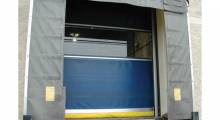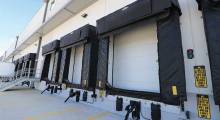Research issued this week by Los Angeles-based industrial real estate firm CBRE stated that projected, or Pro Forma, rents are currently “more than adequate” in many markets and positively confirm the additional development of warehouses and distribution centers.
In its report, entitled “ Breaking Ground: Market Rents Justify New Warehouse Development,” CBRE said it analyzed the gap between pro forma rents in ten United States markets, which it defines as the rental rates that developers can reasonably expect to obtain on newly built warehouses, as well as breakeven rents, which it defines as the rents needed by developers to cover all development expenses. A key finding of the research found that in looking at the ten U.S. markets, pro forma rents exceeded breakeven rents by 20-to-40%.
One of the key takeaways of this research offered up by CBRE in the report is that rising construction costs have not constrained new warehouse development due to strong demand and limited supply of modern logistics facilities. What’s more, it said that the land cost component has seen the most rapid growth, and it can account for more than half of project construction costs, which fall in the range of $45-to-$170 per square-foot.
“The reason we did this research is that it has almost become conventional wisdom, that oversupply is going to be a risk in this market, because that is what usually happens at the end of a cycle,” said David Egan, CBRE Global Head of Industrial & Logistics Research, in an interview. “What we did was look at the breakeven number in terms of the average cost in each market for a 500,000 square-foot building for use as a warehouse or distribution center, and then we looked at the costs for the developer based on market assumptions and project capital assumptions, as well as what a developer’s yield requirements are.”
Egan explained that the thought was to ascertain what the breakeven number is in terms of the price a developer can get based on general market conditions, coupled with the average requirements for development in this space.
“What you can see in the data is that there is a very big spread between kind of the bottom line breakeven and the pro forma rents,” he said. “This means the market will generally absorb what the developers need. The economics are on the side of the developers, and there is a good case to be made for the developers to continue to build. Things are not getting overheated, and if the market does soften a bit, there is a cushion to move the rents a bit and still make money. There is good economic reason for development.”
That was made clear in the report, which noted that the spreads between breakeven and pro forma rents show that there is still room to run growth-wise for industrial and logistics real estate. And it added that a typical sign of things losing momentum in a market occurs when the spreads between pro forma and breakeven rents narrow or disappear altogether.
The largest rent spreads, according to CBRE’s research include: Chicago at 43%; Atlanta at 38%; Phoenix at 35%; Pennsylvania’s I-78/I-81 corridor at 30%; and Los Angeles at 27%.







